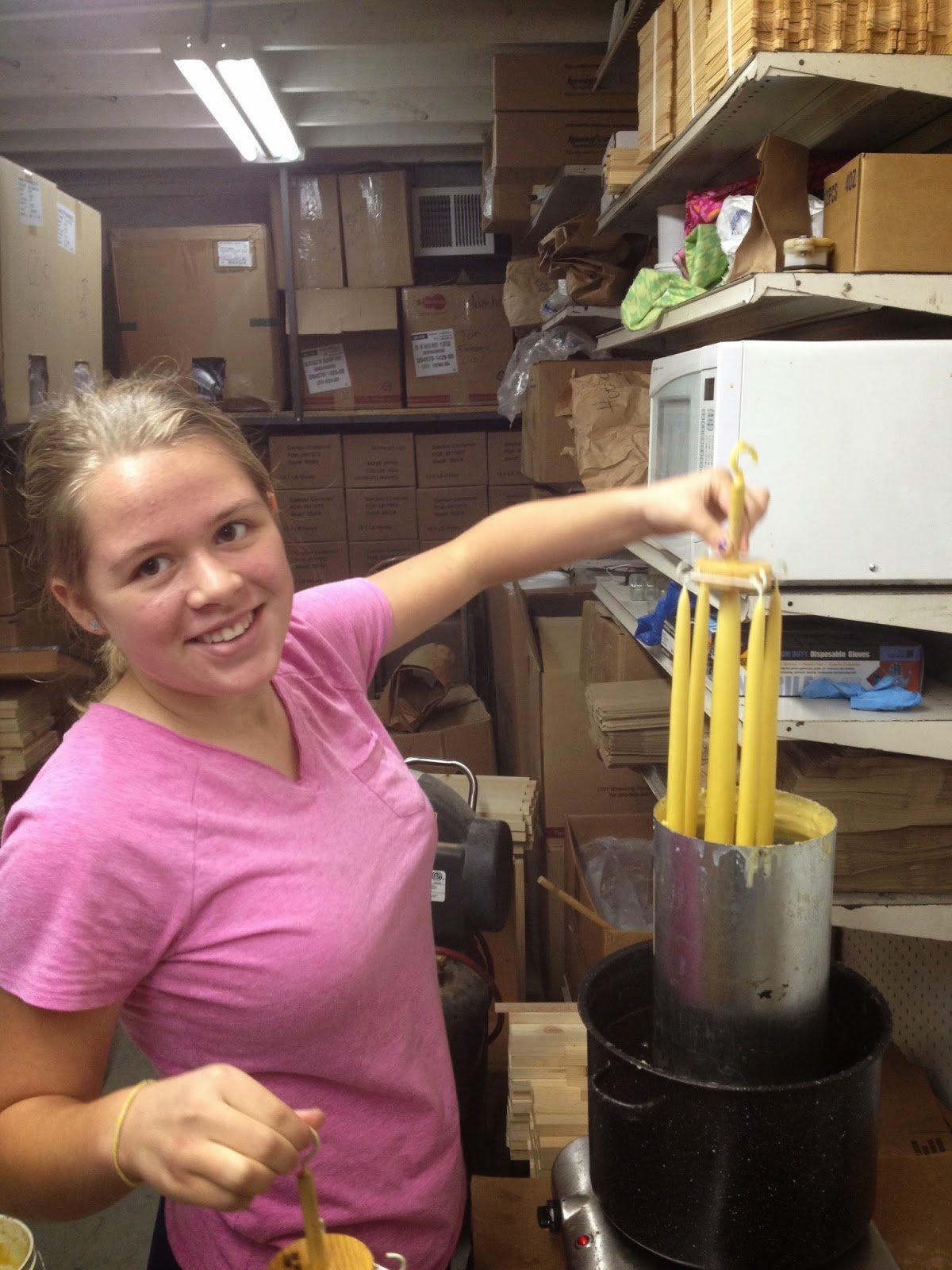Bird's Foot Trefoil is a relatively common pasture plant and ditch bank weed in our area. I noticed some bees working the blossoms several years ago and had a difficult time identifying the plant. I stumped the local master gardeners at the farmer's market and asked a number of my plant geek friends before I was finally able to discover the name. The name may seem strange at first blush, but its rather obvious once the flowers turn into seed heads. They look like mutant chicken feet with a few extra toes. I haven't noticed this plant in bloom in our area until after the blackberries have already started. It must be a decent honey plant for the bees to pay any attention to it at all but I suspect it is poor competition compared to the Himalaya Blackberries. I certainly don't have enough of it in the neighborhood to allow me to harvest Bird's Foot Trefoil honey.
 |
| Bird's foot Trefoil with both flowers and seed heads evident |
I was unable to find this plant listed in the reprint of the 1926 Honey Plants of North America. I did find some small amount of information on the internet. That little article claimed that while the bees will forage on Bird's Foot Trefoil, it makes them somewhat cranky. I have not noticed any "cranky" effect on my bees, but I don't have large fields of this plant and I suspect a relatively small portion of my bees are foraging on it at any given time when it is in bloom. If that is true, I wonder whether the structure of the flowers, which is similar to a snap-dragon, may contribute to that effect.
I recently found a reference to Birdsfoot Trefoil in "Nectar and Pollen Plants of Oregon and the Pacific Northwest". This book gave the scientific name as Lotus corniculatus and indicated that it was a source of both nectar and pollen. Birdsfoot trefoil was further described as an annual or perennial of late spring and early summer, being a secondary source in irrigated pastures in the Rogue Valley. The book also mentioned reports of bees being very irritable when working this crop.
I teach beginning beekeeping classes with Dave Pehling, who is pretty knowledgeable about plants. I told him about the wild cucumber I had discovered and he advised me that it probably wasn't the same plant I had found listed in Honey Plants of North America. He then sent me a link to an article about our local wild cucumber, ( Maher oregonus). The main thrust of the internet article was that fact that this native plant is endangered on south Vancouver Island and described that as the northern limit of its range. This particular species of wild cucumber can apparently be found on the west coast as far south as northern California. The article didn't mention the plant's value as a nectar source for honeybees. I'm assuming it must have some value as a nectar source or the bees wouldn't have shown interest in it. I didn't observe that the bees were foraging for pollen so it must provide some nectar. Since I don't have any of wild cucumber growing nearby, I haven't been able to observe if it is a consistent nectar source or one of those plants that produces nectar only under certain growing conditions.
I also looked this plant up in "Nectar and Pollen Plants of Oregon and the Pacific Northwest". It gave the common name as Old-man-in-the-ground , also called wild cucumber, and described it as a climbing perennial herb which flowers produces white flowers from April through June. It was listed as both a nectar and pollen source but was also described as being of little value to honey bees. There was no explanation given as to the reason it was considered to be of little value to honeybees. It may be that it doesn't produce that much nectar or pollen under normal conditions or there may just not be enough of it in any one place to make a significant contribution to the bees' diet.
Fireweed is a great honey plant in western Washington. Its also known as Willow Herb. Unfortunately, we just don't have enough of it in the lowlands for my bees to produce fireweed honey. I'm sure some of my bees are working the fireweed, but it gets lost in a sea of blackberry nectar. As you move up into the foothills it becomes more plentiful and it is possible to produce fireweed honey. One of the peculiar things about fireweed honey in our area is that it varies from year to year. The reason for this is the presence in the mountains of another local honey plant called Pearly Everlasting, a sort of wild strawflower. Pearly Everlasting produces a dark honey so the color and flavor of the fireweed honey varies from year to year depending on the percentage of nectar obtained from Pearly Everlasting.
 |
| Fireweed also known as Willow-Herb |
I let some fireweed come up in one of my wife's flower gardens several years ago and it almost took over. I had no idea it would spread so vigorously from the roots. I guess the "weed" portion of the name should have been a clue. I would have been content to let the fireweed continue to spread. After all, it produces beautiful flowers and good forage for the bees. That seemed like a win win situation to me. However, my wife had other plans for that portion of her flower garden and decided the fireweed had to go. She pulled up most of it but I noticed we still have a few stalks left. I think I am going to dig those up and plant them in some less cultivated places where they will be free to spread without incurring Linda's wrath.






























